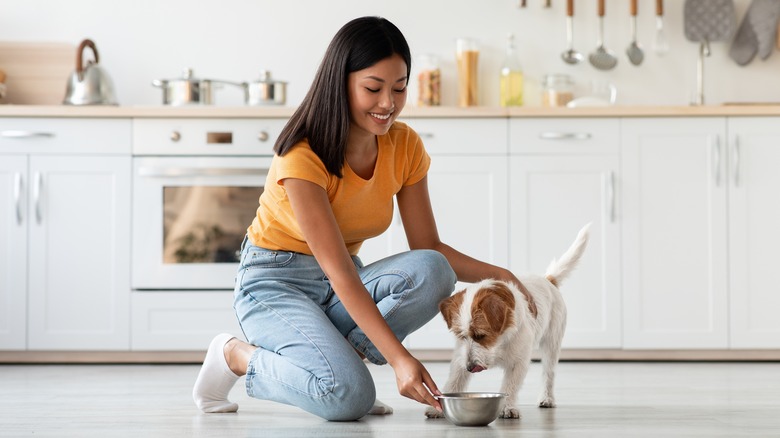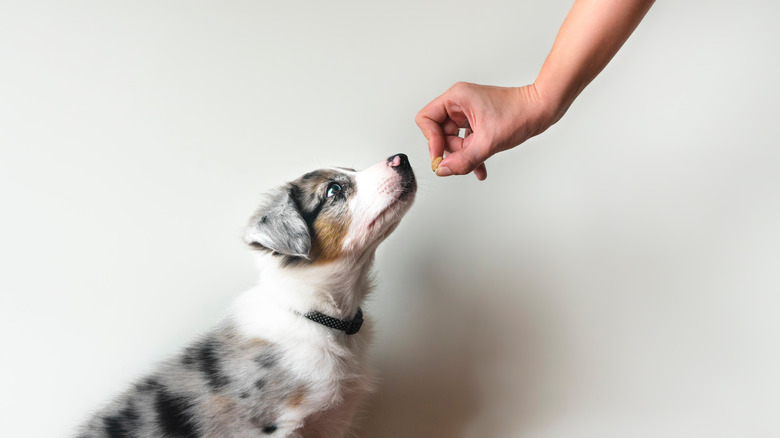The Surprising Reason Your Dog's Food Bowl Could Negatively Impact Your Health
When it comes to feeding our pets, their health doesn't just depend on food alone. Pet food storage and keeping their bowls clean also makes a difference. New data has emerged, showing that these factors can impact our health, too.
According to a study published in PLoS ONE last Wednesday, people have gotten sick as a result of being exposed to dog food that has been contaminated by E. coli and salmonella. The study found that the connection largely stems from feeding dogs raw food diets, which calls for their meals to be prepped in the kitchen.
The U.S. Food & Drug Administration (FDA) states that "raw pet food poses significant health risks to pets and pet owners" and they recommend avoiding raw food diets to prevent infection. According to WebMD, the popularity of raw dog food diets is on the rise and could potentially offer benefits depending on the breed. However, there are also serious risks. In addition to the spread of foodborne bacteria to pet owners, dogs are also at risk of choking on bones, breaking teeth, causing internal punctures, or experiencing damaged health if they eat raw food for an extended period of time.
Tips for preparing and storing dog food
Per the study published in PLoS ONE on April 6, researchers discovered that only 4.7% of dog owners knew about the U.S. Food & Drug Administration's (FDA) guidelines on pet food and dish hygiene.
For preparation, the FDA says to wash your hands for 20 seconds with soap and hot water both before and after handling food and treats. They also say to wash pet food bowls and utensils after each use and to avoid using the bowl itself as a scooper. Old or spoiled pet food should be secured in a plastic bag and tossed in a covered trash can.
For storage, the FDA says to immediately refrigerate or throw out leftover food that comes in a pouch or can. Refrigerated food should be tightly covered and stored at 40 degrees Fahrenheit or lower. Dry pet food should be stored in its original bag in a dry, cool location where the temperature is less than 80 degrees Fahrenheit, and where your dog can't get to it. Make sure the opening of the bag is tightly folded down.
The study found that those dog owners who followed these guidelines significantly decreased contamination by 90 to 99 percent, per CNN.


